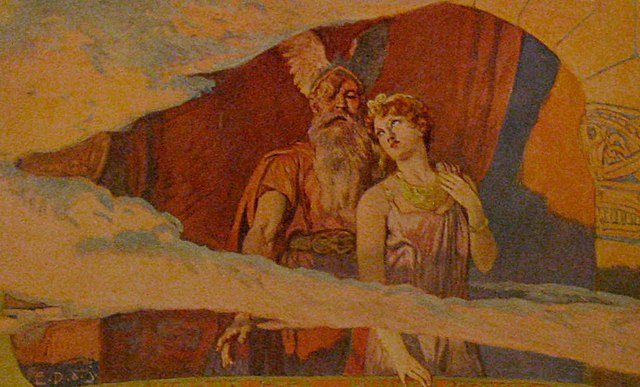In Norse mythology, Fensalir is a location where the goddess Frigg dwells. Fensalir is attested in the Poetic Edda, compiled in the 13th century from earlier traditional sources, and the Prose Edda, written in the 13th century by Snorri Sturluson. Scholars have proposed theories about the implications of the location, including that the location may have some connection to religious practices involving springs, bogs, or swamps in Norse paganism, and that it may be connected to the goddess Sága's watery location Sökkvabekkr.
"Frigg and Her Servants" (1882) by Carl Emil Doepler.
A bog in northern Jutland, Denmark.
Frigg is a goddess, one of the Æsir, in Germanic mythology. In Norse mythology, the source of most surviving information about her, she is associated with marriage, prophecy, clairvoyance and motherhood, and dwells in the wetland halls of Fensalir. In wider Germanic mythology, she is known in Old High German as Frīja, in Langobardic as Frēa, in Old English as Frīg, in Old Frisian as Frīa, and in Old Saxon as Frī, all ultimately stemming from the Proto-Germanic theonym *Frijjō. Nearly all sources portray her as the wife of the god Odin.
Frigg sits enthroned and facing the spear-wielding goddess Gná, flanked by two goddesses, one of whom (Fulla) carries her eski, a wooden box. Illustrated (1882) by Carl Emil Doepler.
Godan and Frigg look down from their window in the heavens to the Winnili women in an illustration by Emil Doepler, 1905
"Wodan Heals Balder's Horse" by Emil Doepler, 1905
The goddess Frigg and her husband, the god Odin, sit in Hliðskjálf and gaze into "all worlds" and make a wager as described in Grímnismál in an illustration by Lorenz Frølich, 1895





